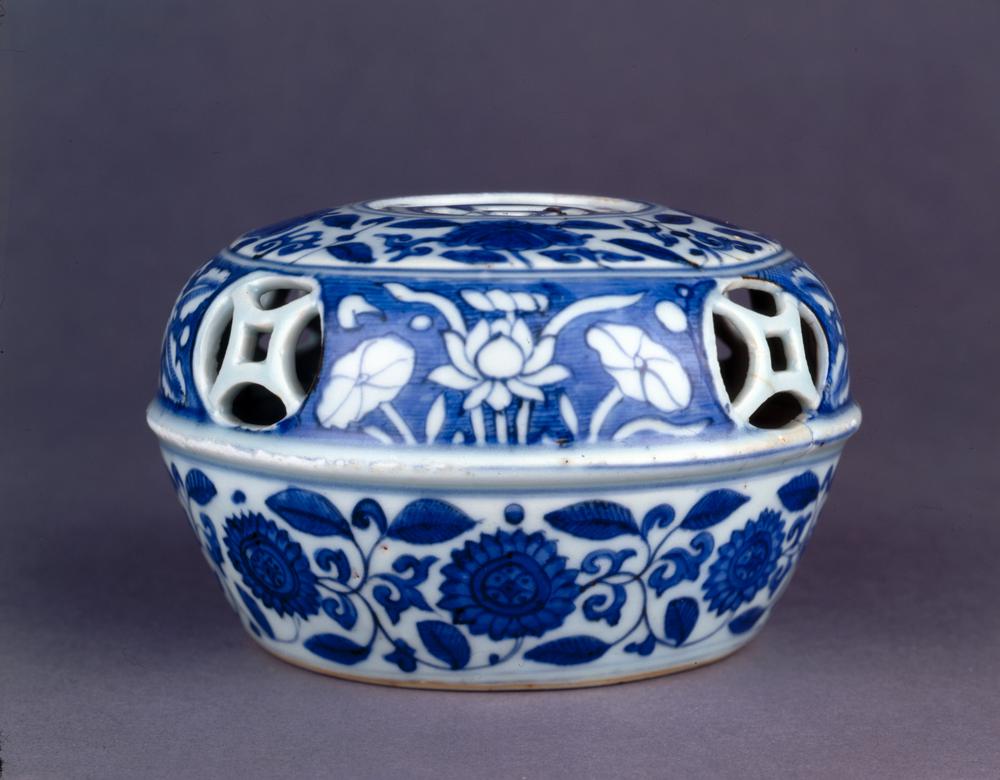Period:Southern Song dynasty Production date:12th century
Materials:silk
Technique:painted
Subjects:calligraphy literature
Dimensions:Height: 29.60 centimetres (colophon) Height: 26.70 centimetres (paintings) Height: 32.30 centimetres (scroll) Length: 739 centimetres (paintings) Length: 1369 centimetres (scroll) Width: 187 centimetres (colophon)
Description:
Handscroll. ‘Illustrations to the Odes of Chen’. Painting by Ma Hezhi (fl. c. 1131-1162) and calligraphy in standard script, probably written by a court calligrapher in the emperor’s style. The handscroll portrays various figures in landscape settings. Painted in ink and colours on silk.
IMG
![图片[1]-handscroll; calligraphy; painting BM-1964-0411-0.1-China Archive](https://chinaarchive.net/Southern Song dynasty/Paintings/mid_00094706_001.jpg)
![图片[2]-handscroll; calligraphy; painting BM-1964-0411-0.1-China Archive](https://chinaarchive.net/Southern Song dynasty/Paintings/mid_00134891_001.jpg)
![图片[3]-handscroll; calligraphy; painting BM-1964-0411-0.1-China Archive](https://chinaarchive.net/Southern Song dynasty/Paintings/mid_00134893_001.jpg)
![图片[4]-handscroll; calligraphy; painting BM-1964-0411-0.1-China Archive](https://chinaarchive.net/Southern Song dynasty/Paintings/mid_00134895_001.jpg)
![图片[5]-handscroll; calligraphy; painting BM-1964-0411-0.1-China Archive](https://chinaarchive.net/Southern Song dynasty/Paintings/mid_00134897_001.jpg)
![图片[6]-handscroll; calligraphy; painting BM-1964-0411-0.1-China Archive](https://chinaarchive.net/Southern Song dynasty/Paintings/mid_00134898_001.jpg)
![图片[7]-handscroll; calligraphy; painting BM-1964-0411-0.1-China Archive](https://chinaarchive.net/Southern Song dynasty/Paintings/mid_00134900_001.jpg)
![图片[8]-handscroll; calligraphy; painting BM-1964-0411-0.1-China Archive](https://chinaarchive.net/Southern Song dynasty/Paintings/mid_00134902_001.jpg)
![图片[9]-handscroll; calligraphy; painting BM-1964-0411-0.1-China Archive](https://chinaarchive.net/Southern Song dynasty/Paintings/mid_00134904_001.jpg)
![图片[10]-handscroll; calligraphy; painting BM-1964-0411-0.1-China Archive](https://chinaarchive.net/Southern Song dynasty/Paintings/mid_00134905_001.jpg)
![图片[11]-handscroll; calligraphy; painting BM-1964-0411-0.1-China Archive](https://chinaarchive.net/Southern Song dynasty/Paintings/mid_00134907_001.jpg)
![图片[12]-handscroll; calligraphy; painting BM-1964-0411-0.1-China Archive](https://chinaarchive.net/Southern Song dynasty/Paintings/mid_00134909_001.jpg)
![图片[13]-handscroll; calligraphy; painting BM-1964-0411-0.1-China Archive](https://chinaarchive.net/Southern Song dynasty/Paintings/mid_00134912_001.jpg)
![图片[14]-handscroll; calligraphy; painting BM-1964-0411-0.1-China Archive](https://chinaarchive.net/Southern Song dynasty/Paintings/mid_00134913_001.jpg)
![图片[15]-handscroll; calligraphy; painting BM-1964-0411-0.1-China Archive](https://chinaarchive.net/Southern Song dynasty/Paintings/mid_00134914_001.jpg)
![图片[16]-handscroll; calligraphy; painting BM-1964-0411-0.1-China Archive](https://chinaarchive.net/Southern Song dynasty/Paintings/mid_00134915_001.jpg)
![图片[17]-handscroll; calligraphy; painting BM-1964-0411-0.1-China Archive](https://chinaarchive.net/Southern Song dynasty/Paintings/mid_00467082_001.jpg)
![图片[18]-handscroll; calligraphy; painting BM-1964-0411-0.1-China Archive](https://chinaarchive.net/Southern Song dynasty/Paintings/mid_00467087_001.jpg)
![图片[19]-handscroll; calligraphy; painting BM-1964-0411-0.1-China Archive](https://chinaarchive.net/Southern Song dynasty/Paintings/mid_00467643_001.jpg)
![图片[20]-handscroll; calligraphy; painting BM-1964-0411-0.1-China Archive](https://chinaarchive.net/Southern Song dynasty/Paintings/mid_00467646_001.jpg)
![图片[21]-handscroll; calligraphy; painting BM-1964-0411-0.1-China Archive](https://chinaarchive.net/Southern Song dynasty/Paintings/mid_00467649_001.jpg)
![图片[22]-handscroll; calligraphy; painting BM-1964-0411-0.1-China Archive](https://chinaarchive.net/Southern Song dynasty/Paintings/mid_00467657_001.jpg)
![图片[23]-handscroll; calligraphy; painting BM-1964-0411-0.1-China Archive](https://chinaarchive.net/Southern Song dynasty/Paintings/mid_00467768_001.jpg)
![图片[24]-handscroll; calligraphy; painting BM-1964-0411-0.1-China Archive](https://chinaarchive.net/Southern Song dynasty/Paintings/mid_00467771_001.jpg)
![图片[25]-handscroll; calligraphy; painting BM-1964-0411-0.1-China Archive](https://chinaarchive.net/Southern Song dynasty/Paintings/mid_00467774_001.jpg)
![图片[26]-handscroll; calligraphy; painting BM-1964-0411-0.1-China Archive](https://chinaarchive.net/Southern Song dynasty/Paintings/mid_00467778_001.jpg)
![图片[27]-handscroll; calligraphy; painting BM-1964-0411-0.1-China Archive](https://chinaarchive.net/Southern Song dynasty/Paintings/mid_00467781_001.jpg)
![图片[28]-handscroll; calligraphy; painting BM-1964-0411-0.1-China Archive](https://chinaarchive.net/Southern Song dynasty/Paintings/mid_00467784_001.jpg)
![图片[29]-handscroll; calligraphy; painting BM-1964-0411-0.1-China Archive](https://chinaarchive.net/Southern Song dynasty/Paintings/mid_00467786_001.jpg)
![图片[30]-handscroll; calligraphy; painting BM-1964-0411-0.1-China Archive](https://chinaarchive.net/Southern Song dynasty/Paintings/mid_00467788_001.jpg)
![图片[31]-handscroll; calligraphy; painting BM-1964-0411-0.1-China Archive](https://chinaarchive.net/Southern Song dynasty/Paintings/mid_00467790_001.jpg)
![图片[32]-handscroll; calligraphy; painting BM-1964-0411-0.1-China Archive](https://chinaarchive.net/Southern Song dynasty/Paintings/mid_00507153_001.jpg)
Comments:Rawson 1992:The Emperor Gaozong (r.1127-1163) commissioned the court painter Ma Hezhi to illustrate the entire ‘Shijing’ (‘Book of Songs’). Many scrolls survive showing sections of this work, in which the text of each song – traditionally thought to have been written by Emperor Gaozong, but probably done by a court calligrapher – preceded each illustration. Imperial patronage of these illustrated versions of ancient classics demonstrated the intention of the emperor to reinforce his dynastic claims by reference to ancient virtues. The Southern Song were under considerable political pressure, having been forced to move their capital south to Lin’an (present-day Hangzhou) after the Jin capture of Bianliang (present-day Kaifeng), and in these circumstances turned to traditional methods of support for their political claims and aspirations.
Materials:silk
Technique:painted
Subjects:calligraphy literature
Dimensions:Height: 29.60 centimetres (colophon) Height: 26.70 centimetres (paintings) Height: 32.30 centimetres (scroll) Length: 739 centimetres (paintings) Length: 1369 centimetres (scroll) Width: 187 centimetres (colophon)
Description:
Handscroll. ‘Illustrations to the Odes of Chen’. Painting by Ma Hezhi (fl. c. 1131-1162) and calligraphy in standard script, probably written by a court calligrapher in the emperor’s style. The handscroll portrays various figures in landscape settings. Painted in ink and colours on silk.
IMG
![图片[1]-handscroll; calligraphy; painting BM-1964-0411-0.1-China Archive](https://chinaarchive.net/Southern Song dynasty/Paintings/mid_00094706_001.jpg)
![图片[2]-handscroll; calligraphy; painting BM-1964-0411-0.1-China Archive](https://chinaarchive.net/Southern Song dynasty/Paintings/mid_00134891_001.jpg)
![图片[3]-handscroll; calligraphy; painting BM-1964-0411-0.1-China Archive](https://chinaarchive.net/Southern Song dynasty/Paintings/mid_00134893_001.jpg)
![图片[4]-handscroll; calligraphy; painting BM-1964-0411-0.1-China Archive](https://chinaarchive.net/Southern Song dynasty/Paintings/mid_00134895_001.jpg)
![图片[5]-handscroll; calligraphy; painting BM-1964-0411-0.1-China Archive](https://chinaarchive.net/Southern Song dynasty/Paintings/mid_00134897_001.jpg)
![图片[6]-handscroll; calligraphy; painting BM-1964-0411-0.1-China Archive](https://chinaarchive.net/Southern Song dynasty/Paintings/mid_00134898_001.jpg)
![图片[7]-handscroll; calligraphy; painting BM-1964-0411-0.1-China Archive](https://chinaarchive.net/Southern Song dynasty/Paintings/mid_00134900_001.jpg)
![图片[8]-handscroll; calligraphy; painting BM-1964-0411-0.1-China Archive](https://chinaarchive.net/Southern Song dynasty/Paintings/mid_00134902_001.jpg)
![图片[9]-handscroll; calligraphy; painting BM-1964-0411-0.1-China Archive](https://chinaarchive.net/Southern Song dynasty/Paintings/mid_00134904_001.jpg)
![图片[10]-handscroll; calligraphy; painting BM-1964-0411-0.1-China Archive](https://chinaarchive.net/Southern Song dynasty/Paintings/mid_00134905_001.jpg)
![图片[11]-handscroll; calligraphy; painting BM-1964-0411-0.1-China Archive](https://chinaarchive.net/Southern Song dynasty/Paintings/mid_00134907_001.jpg)
![图片[12]-handscroll; calligraphy; painting BM-1964-0411-0.1-China Archive](https://chinaarchive.net/Southern Song dynasty/Paintings/mid_00134909_001.jpg)
![图片[13]-handscroll; calligraphy; painting BM-1964-0411-0.1-China Archive](https://chinaarchive.net/Southern Song dynasty/Paintings/mid_00134912_001.jpg)
![图片[14]-handscroll; calligraphy; painting BM-1964-0411-0.1-China Archive](https://chinaarchive.net/Southern Song dynasty/Paintings/mid_00134913_001.jpg)
![图片[15]-handscroll; calligraphy; painting BM-1964-0411-0.1-China Archive](https://chinaarchive.net/Southern Song dynasty/Paintings/mid_00134914_001.jpg)
![图片[16]-handscroll; calligraphy; painting BM-1964-0411-0.1-China Archive](https://chinaarchive.net/Southern Song dynasty/Paintings/mid_00134915_001.jpg)
![图片[17]-handscroll; calligraphy; painting BM-1964-0411-0.1-China Archive](https://chinaarchive.net/Southern Song dynasty/Paintings/mid_00467082_001.jpg)
![图片[18]-handscroll; calligraphy; painting BM-1964-0411-0.1-China Archive](https://chinaarchive.net/Southern Song dynasty/Paintings/mid_00467087_001.jpg)
![图片[19]-handscroll; calligraphy; painting BM-1964-0411-0.1-China Archive](https://chinaarchive.net/Southern Song dynasty/Paintings/mid_00467643_001.jpg)
![图片[20]-handscroll; calligraphy; painting BM-1964-0411-0.1-China Archive](https://chinaarchive.net/Southern Song dynasty/Paintings/mid_00467646_001.jpg)
![图片[21]-handscroll; calligraphy; painting BM-1964-0411-0.1-China Archive](https://chinaarchive.net/Southern Song dynasty/Paintings/mid_00467649_001.jpg)
![图片[22]-handscroll; calligraphy; painting BM-1964-0411-0.1-China Archive](https://chinaarchive.net/Southern Song dynasty/Paintings/mid_00467657_001.jpg)
![图片[23]-handscroll; calligraphy; painting BM-1964-0411-0.1-China Archive](https://chinaarchive.net/Southern Song dynasty/Paintings/mid_00467768_001.jpg)
![图片[24]-handscroll; calligraphy; painting BM-1964-0411-0.1-China Archive](https://chinaarchive.net/Southern Song dynasty/Paintings/mid_00467771_001.jpg)
![图片[25]-handscroll; calligraphy; painting BM-1964-0411-0.1-China Archive](https://chinaarchive.net/Southern Song dynasty/Paintings/mid_00467774_001.jpg)
![图片[26]-handscroll; calligraphy; painting BM-1964-0411-0.1-China Archive](https://chinaarchive.net/Southern Song dynasty/Paintings/mid_00467778_001.jpg)
![图片[27]-handscroll; calligraphy; painting BM-1964-0411-0.1-China Archive](https://chinaarchive.net/Southern Song dynasty/Paintings/mid_00467781_001.jpg)
![图片[28]-handscroll; calligraphy; painting BM-1964-0411-0.1-China Archive](https://chinaarchive.net/Southern Song dynasty/Paintings/mid_00467784_001.jpg)
![图片[29]-handscroll; calligraphy; painting BM-1964-0411-0.1-China Archive](https://chinaarchive.net/Southern Song dynasty/Paintings/mid_00467786_001.jpg)
![图片[30]-handscroll; calligraphy; painting BM-1964-0411-0.1-China Archive](https://chinaarchive.net/Southern Song dynasty/Paintings/mid_00467788_001.jpg)
![图片[31]-handscroll; calligraphy; painting BM-1964-0411-0.1-China Archive](https://chinaarchive.net/Southern Song dynasty/Paintings/mid_00467790_001.jpg)
![图片[32]-handscroll; calligraphy; painting BM-1964-0411-0.1-China Archive](https://chinaarchive.net/Southern Song dynasty/Paintings/mid_00507153_001.jpg)
Comments:Rawson 1992:The Emperor Gaozong (r.1127-1163) commissioned the court painter Ma Hezhi to illustrate the entire ‘Shijing’ (‘Book of Songs’). Many scrolls survive showing sections of this work, in which the text of each song – traditionally thought to have been written by Emperor Gaozong, but probably done by a court calligrapher – preceded each illustration. Imperial patronage of these illustrated versions of ancient classics demonstrated the intention of the emperor to reinforce his dynastic claims by reference to ancient virtues. The Southern Song were under considerable political pressure, having been forced to move their capital south to Lin’an (present-day Hangzhou) after the Jin capture of Bianliang (present-day Kaifeng), and in these circumstances turned to traditional methods of support for their political claims and aspirations.
© Copyright
The copyright of the article belongs to the author, please keep the original link for reprinting.
THE END
![[Qing Dynasty] British female painter—Elizabeth Keith, using woodblock prints to record China from the late Qing Dynasty to the early Republic of China—1915-China Archive](https://chinaarchive.net/wp-content/uploads/2022/11/image-191x300.png)




